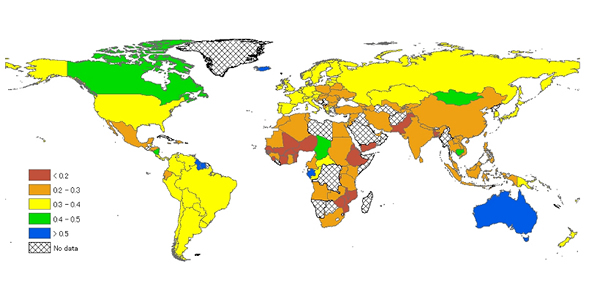[The 5th Seminar](Initiative 1 Seminar)
Date:June 23, 2008 (Mon.) 16:00-18:00PM
Venue: E207, 2nd floor of East Building, CSEAS
Presentation:
1.Takahiro Sato (G-COE Researcher)
2.Taizo Wada (G-COE Researcher)
Commentator:
Mamoru Kanzaki (Associate Professor, Faculty Gruduate School of Agriculture)
Akio Tanabe (Associate Professor, Institute for Research in Humanities)
【Record of Activity】
The Geosphere was defined as the part of the earth’s crustal construction made up of rocks and regolith, and the Biosphere as the surface part of the earth, produced through the interaction of biological lifeforms and their surrounding environment. A proposal was made to use the primary energy supplies and primary biomass supplies (Net Primary Production; NPP) of each country as evaluation indices. As an evaluation index for a narrowly-defined Humanosphere, while introducing Disability-adjusted life expectancy (DALE), two models were investigated; one using the GDP index and Education index from a Human Development Index (HDI) and the other excluding the GDP index. Based on the points presented above, the three patterns mentioned below, which combine indices for these three spheres, were established, and a regional sustainability index for each country was indicated in the form of a thematic map. At the same time, questions regarding the validity of techniques in which a human-related index and an environmental-related index are summed together and averaged, and regarding the issue of how in the future to incorporate qualitative research results, were also raised, and a plan to analyze trends over the past 20-30 years was announced.
|
Pattern |
1 |
2 |
3 |
|
Humanosphere |
DALE |
DALE |
DALE |
|
Biosphere |
NPP/population |
NPP/population |
NPP/population |
|
Geosphere |
Population/Energy |
Population/Energy |
GDP/Energy |
Regional Sustainability Index 3

(Takahiro Sato and Taizo Wada)